Tulips
Rembrandt Tulips:
April 3, 2010
Two flowers were bitten off, including the one in the front-center in this picture.

Because Tulips tend not to do well after the first year they bloom, I researched planting recommendations
and tried to follow them. I had to use a large gas-powered auger to break up the ground 12+" deep, dug out
the roots, rocks, and clay, put in a 6"-layer of a mix of new topsoil and humus, then a thin layer of bone meal,
followed by a thin layer of sand, then the tulip bulbs, then covered that with 6" of humus and topsoil mixed.
Because we have a lot of squirrels, armadillos, etc., I covered the bed with heavy chicken wire and covered
that with mulch. I've read that after blooms flade, the stems should be cut off to prevent energy from being
spent on the production of seeds. Around the edges of the bed are some Self Heal and Beardtongue which
will bloom in the summer after the Tulips and Mountain Bells are done.
Oct.18: A critter attacked the bed last night and dug up all around the bulbs big time, but thanks to the chicken
wire, they did not get to the bulbs.
April 25, 2011: Despite all the careful preparation, only one tulip bloomed a second time.
Fire and Ice Tulips Combo:
April 3, 2010:
Deer ate the first 3-4 tulips before I could get deer repellant on them.
In this picture, a dozen tulips are open, including six Parrot Tulips.
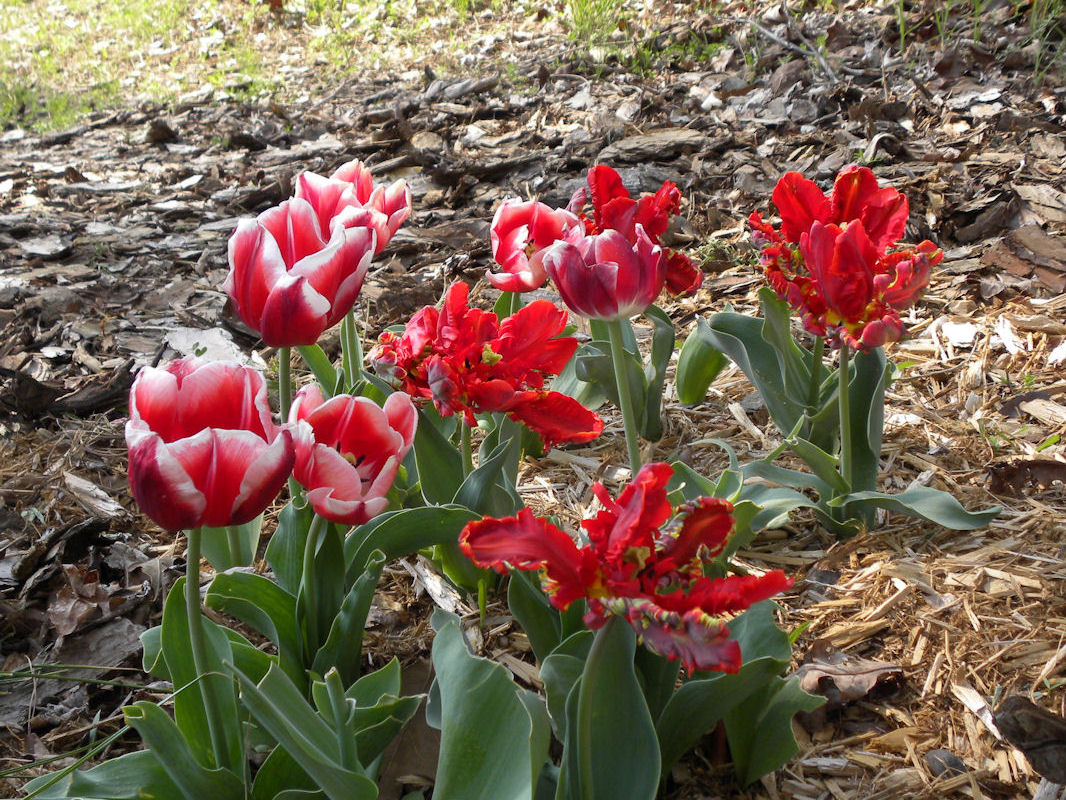
April 4-6, 2010:
This is the "Parrot" or Blumex Tulip.

March 8, 2010:
Deer chow:
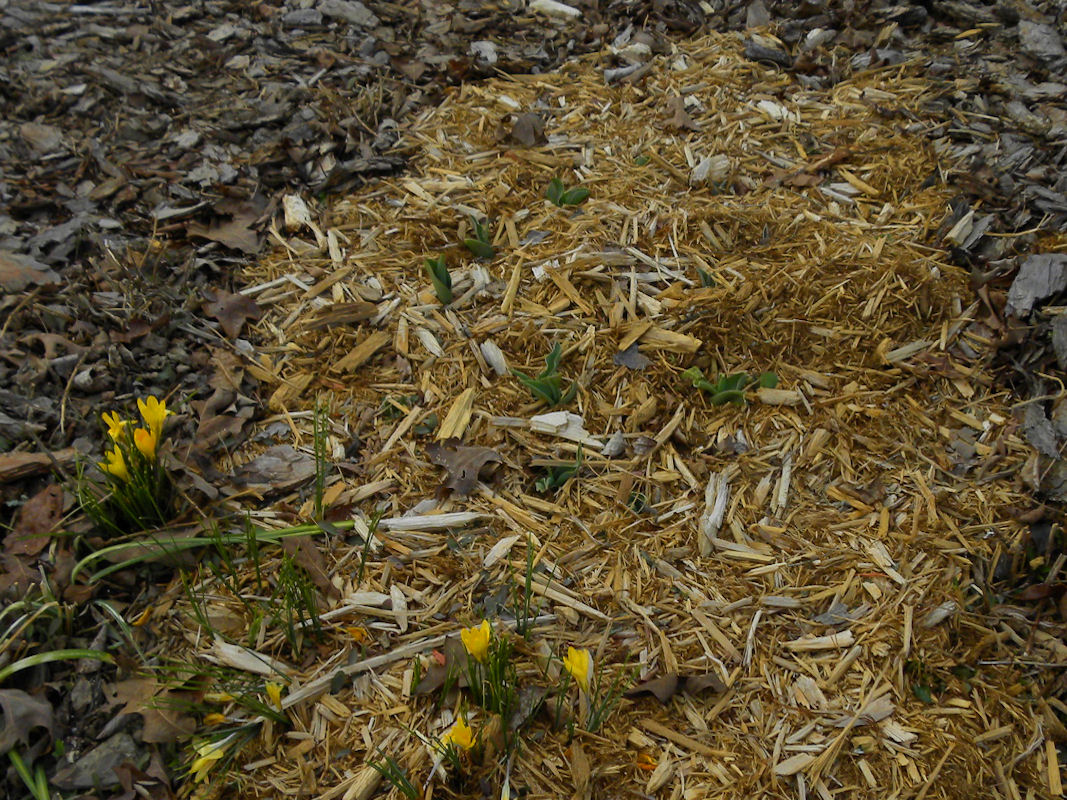
Donald Duck Tulips:
March 22, 2011
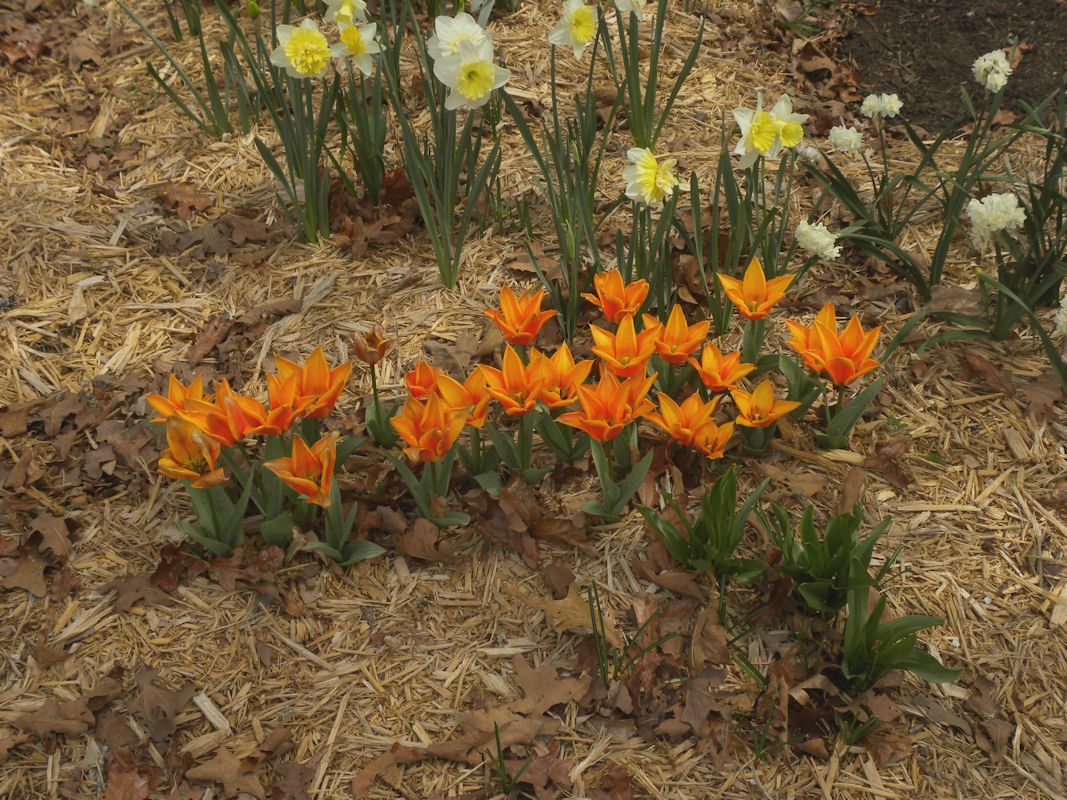
After this experience with Tulips, I'm not inclined to get any more.
However, some people in our neighborhood (the Bammeses) put hundreds of tulips in their yard every year.
In addition to the cost of the tulips, they also have to spray them regularly with stuff to keep the deer off them.
Here are a few pictures of their yard:
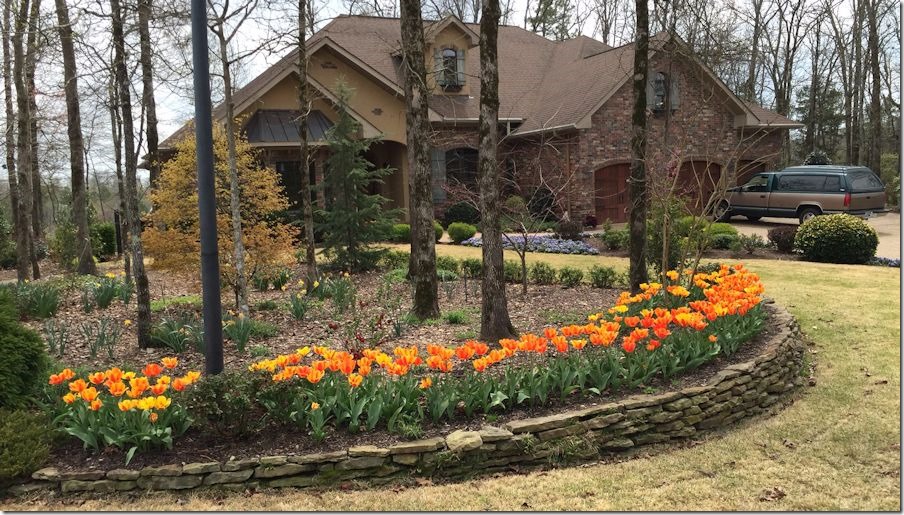
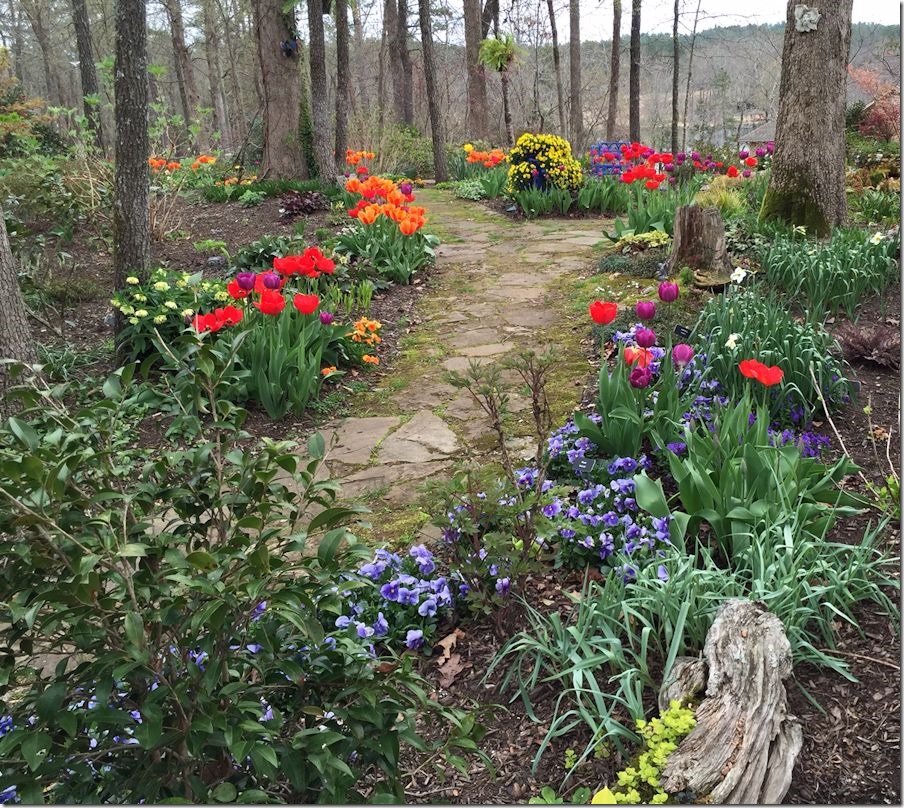
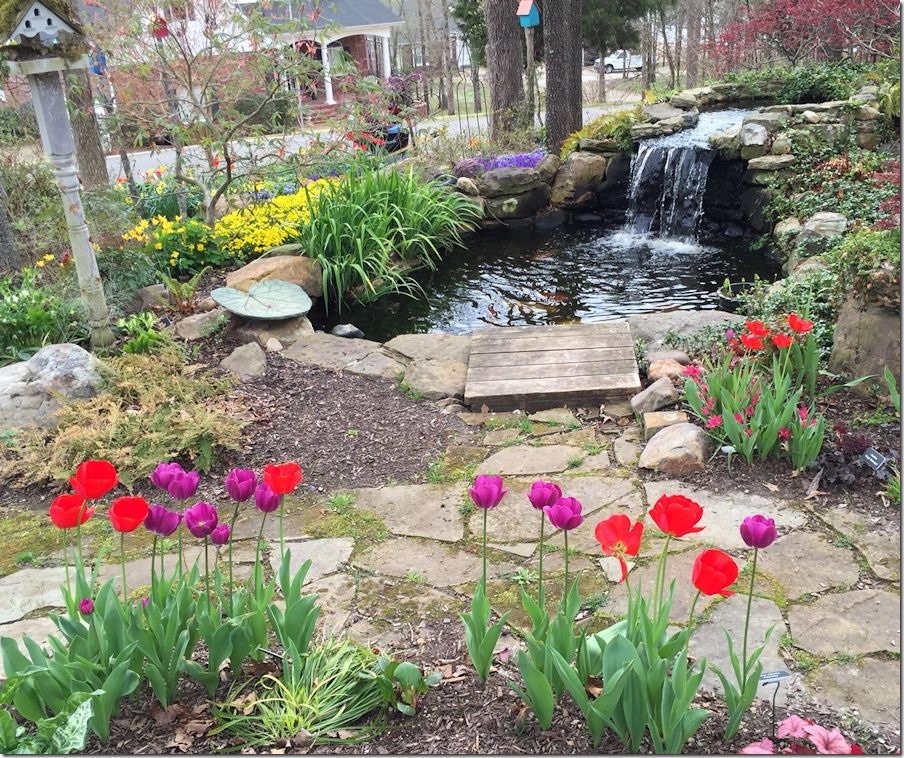
|






